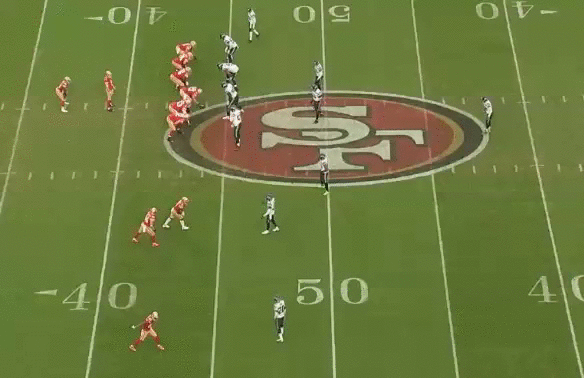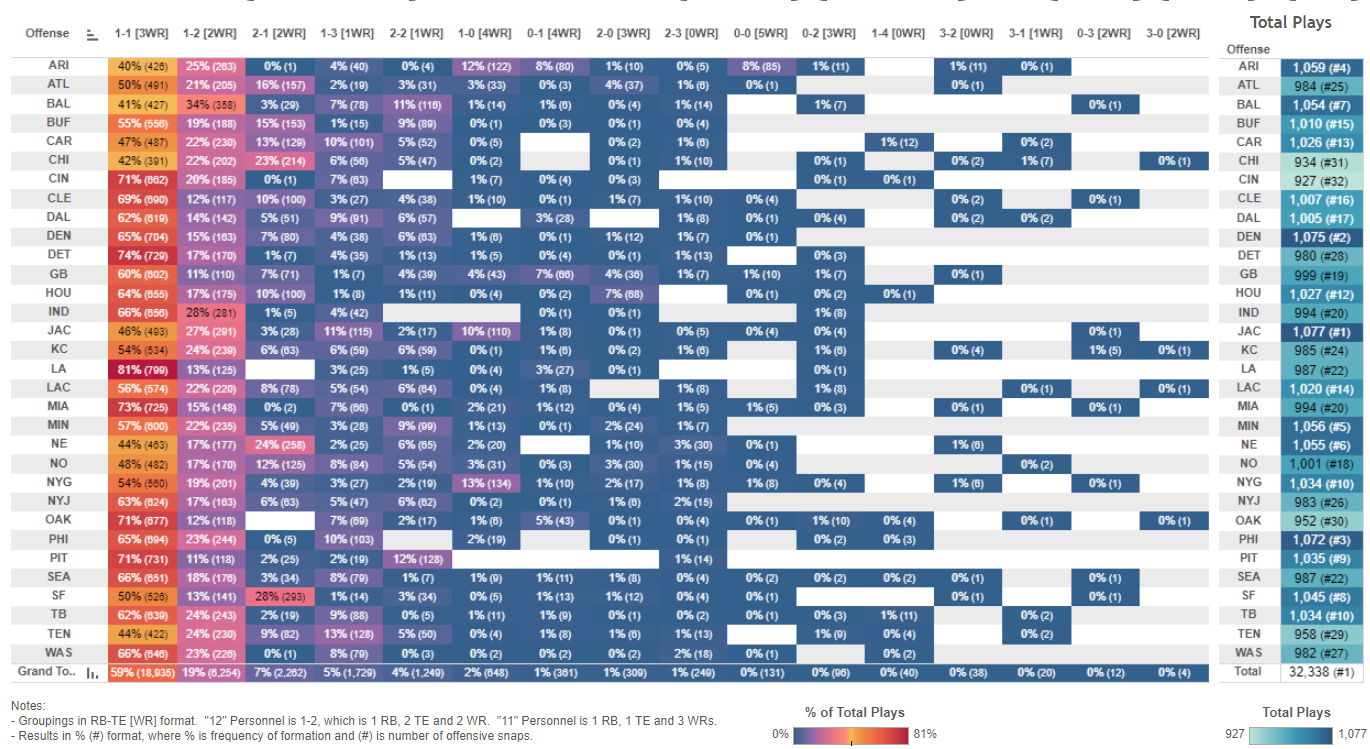Kyle showed a clear preference for '21' last season. In 2017, teams like JAC and BAL showed a clear preference for 12 (
1rb/
2te/2wr). Both force the defense to stay in base (4 defensive backs).
21 (2rb/1te/2wr)

12

This is from the Hoodie himself as he discusses the differences in '21' and '12'. There's a lot of nerdy X&Os stuff in his answer. Below are snippets.
-------------------
http://www.bostonherald.com/sports/patriots_nfl/the_blitz/2013/08/bill_belichick_dishes_on_differences_between_12_and_21
Bill Belichick was asked today to explain the different advantages in sets with two running backs and one tight end ("21" personnel) instead of one running back and two tight ends ("12"). Both sets also include two wide receivers.
-
"Well, I think when you, just fundamentally, when you have one back in the backfield (12) and you have four on-the-line receivers, that gives you an ability to get into the defense potentially with four people," Belichick said.
"Or even if it's three of them, sometimes the defense isn't sure which three of them it is. One tight end could be in it and the other guy could be in protection, that type of thing."
- "But as far as your running gaps, I mean, you can put more width at the formation by having a guy on the line, whether it's four on one side and two on the other side of the center, or three and three. You just have a wider front, which there are some advantages to that. By having them in the backfield, you can create that same four-man surface or three-man surface after the snap so the defense doesn't know where the four-man surface or three-man surface is. The fullback has to –- he can build that from the backfield."
- "And then there are also, let's say, a greater variety of blocking schemes with the fullback in the backfield (21) because he can block different guys and come from different angles. He's not always behind the quarterback. He could be offset one way or the other and create different blocking schemes and angles that it's harder to get from the line of scrimmage."
- "Also, depending on who your tight end is, it can be a little bit easier to pass protect seven men because two of them are in the backfield (21) instead of us having one in the backfield. I think fundamentally it's a little easier to pick them up when you a have a guy in the backfield that can step up and block him from the fullback position (21) as opposed to a tight end in the line of scrimmage (12)
- "Obviously when you have a guy in the backfield (21), it's harder to get those two receivers vertically into the defense in the passing game. They're usually running shorter routes to the flat or checking over the ball or those kind of things, short crossing routes, versus having that fourth receiver on the line of scrimmage who can run some downfield routes,"
------------------
So what Hoodie is basically saying:
- In the passing game: '12' allows for the 2TEs to get into their routes faster since they are closer to the line of scrimmage when compared to a FB in the backfield ('21'). So '12' allows the offense to threaten vertically easier than '21'.
- In the run game: '12' with two inline TEs will spread the defensive box wider. But '21' allows the FB to move and set the strongside after the snap. After the snap allows the offense to be more unpredictable with unbalanced formations. More variety in run game concepts with a FB.
- In blitz pickup: '21' puts two potential blockers in the backfield which is easier to pass protect because they can see blitzers coming - as opposed to '12' where TEs are inline.


 It would be interesting how they defense a play action pass with that kind of personnel grouping.
It would be interesting how they defense a play action pass with that kind of personnel grouping.

